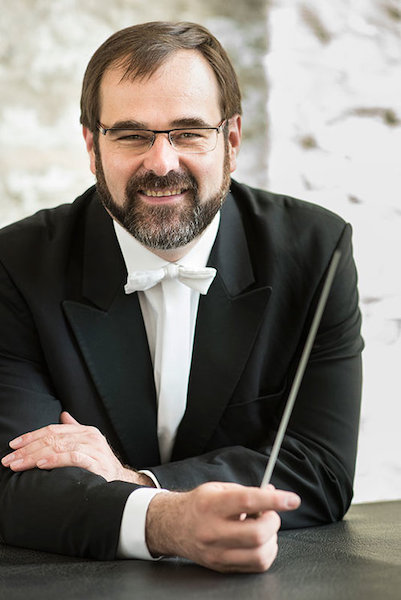Texas Music Festival closes with a powerful Mahler Sixth

Gustav Mahler’s Symphony No. 6, with its despondent close, may seem a bizarre choice for a festive occasion. Yet the Texas Music Festival turned to the composer’s so-called “Tragic” symphony for the grand finale of its 30th annual edition.
Tackling the massive work Saturday in the University of Houston’s Moores Opera House, the Festival Orchestra showed that Mahler’s sturm und drang may not have been so out-of-place after all. Led by conductor Josep Caballé-Domenech, the ensemble delivered it with a power and fervor that amounted to a celebration on its own terms–a display of what these young musicians could accomplish after just one month of playing together.
The strings launched into the opening march with vigor and fiery tone, and Caballé-Domenech–music director of the Colorado Springs Philharmonic—brought stateliness and momentum enough to bring out its implacable force. As the rest of the orchestra joined in, the woodwinds added pungency; the brasses, flashes of force.
Caballé-Domenech brought out the music’s contrapuntal display, beckoning to one section of the orchestra after another as each came to the fore. The players responded to him eagerly, and they continued to do so when the music took new directions. The woodwinds brought a smoother contour to the flowing theme that interrupts the agitation, and the strings treated the work’s first surge of lyricism to a burst of gleaming tone.
As Mahler set the themes against one another, the orchestra delivered the clash dramatically. After, the orchestra grew hushed, the streams glistened, and the faint chime of cowbells–so quiet they were almost subliminal–helped put serenity in place of conflict. The woodwinds’ mellifluous melody floated out in phrases that were as sweet and unhurried as the march had been brusque.
Adopting Mahler’s original order of the middle two movements–which he later reversed–Caballé-Domenech and the orchestra put the Andante moderato next. Thanks to the strings’ soft, singing tone, the intimacy of its opening made an immediate, arresting contrast with the tumult that had preceded it. Caballé-Domenech let the lyricism unfold expansively, sometimes giving it an extra degree of flow and lilt. The woodwinds gave their theme a more plaintive, keening aura, and as the movement’s intensity grew, the orchestra’s heft and fire lent the passions a visceral impact.
The players gave a vivid profile to each of the Scherzo’s sharply contrasted dances. The main one was crisp, taut and blunt, but the oboe’s deftness launched a cozy, relaxed section reminiscent of the ländler in other Mahler symphonies. Muffled strings and winds led in a ghostlier direction, and Caballé-Domenech later summoned the snarling, clattering tones of a danse macabre.
When the finale, harkening back to the first movement, unleashed another turbulent march and new bursts of fleeting jubilation, the orchestra injected them with fresh vitality and electricity. But the musicians also brought a sepulchral tone as the low brasses and woodwinds played the chorale.
In the climaxes, Caballé-Domenech set loose the full, walloping force of the orchestra’s pealing brasses and churning strings. The work’s famous hammer strokes, symbolizing the blows of fate, employed a wooden box and giant mallet crafted by University of Houston percussion professor Blake Wilkins. In the midst of the orchestra’s tumult, it added an extra degree of brute force rather than standing out.
When the clamor finally was spent, Caballé-Domenech led the orchestra’s lowest sections in drawing out the symphony’s long fadeout–with a final, full-orchestra thunderclap capping it off. Conductor and orchestra then froze, holding the audience still for a long silence to let the music’s finality sink in.